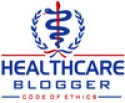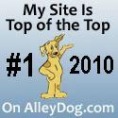In the pioneer days a new doctor would come to town, “hang out his shingle,” and the resultant word-of-mouth in the community was enough to keep him gainfully employed for the remainder of his life.
In many communities it still works that way. In those communities there are more people looking for a primary healthcare provider than there are doctors willing to accept new patients.
Not all doctors, however!
Not all physicians, dentists, optometrists, chiropractors, physical therapists or nurse practitioners have a waiting list of new patients, hoping to become “accepted.”
At a meeting with a television sales staff yesterday I was asked if professionals (other than personal injury lawyers) ever advertised their practices? I had to admit that it’s not common. But, the problem, as I see it, isn’t tradition. The problem is communication.
Healthcare providers tend to be scientifically-trained, analytical, rational, left-brain thinkers. The nature of their professions requires them to critically examine the clues and deduce the optimal treatment.
Marketing? That’s persuasion. That’s an intuitive, perceptive, emotional, right-brain process. Its a way of thinking which runs counter to a health care provider’s mindset.
And when effective salespeople talk about “advertising,” they know that people make decisions emotionally, then come up with a intellectual explanation for the purchase later. Naturally, the salesperson uses emotional reasoning. Just as naturally, the health care provider is making a rational decision.
The doctor asks a rational question:
“If I spend $2,500 on this advertising schedule, how many new patients will I get?”
But the salesperson responds with an intuitive answer, “If you don’t spend the money, how many new patients will you get?”
Since they’re obviously not communicating, no sale happens. No advertising is run. And the doctor still wonders how to effectively (and ethically) attract new patients and grow his practice.

 RSS Feed
RSS Feed































